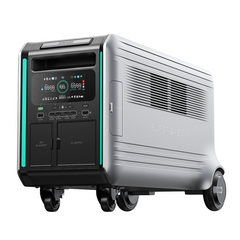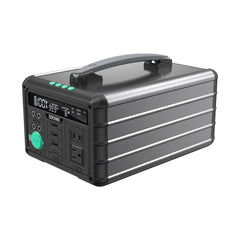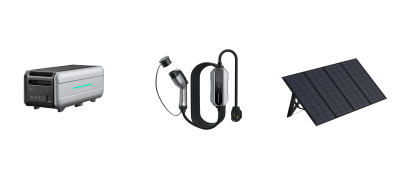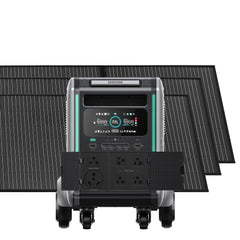How Long Do Solar Panels Last: Understanding the Lifespan of Solar Panels
Solar panels, a cornerstone in the field of renewable energy sources, have a durability that is indeed remarkable. When one considers the lifespan of a solar panel, it's essential to understand that it doesn't just cease to work after a particular period.
For those wondering how long do solar panels last, a solar panel is generally expected to last between 25 to 30 years, maintaining a decent efficiency level throughout this time.
However, as with any electronic device, a slight decrease in the output of a solar panel is noticed as the years pass by. This reduction doesn't indicate an abrupt failure, but rather a gradual decline in efficiency. It's akin to how the battery life of electronic gadgets degrades over time.
Nonetheless, many solar panels have demonstrated robustness by remaining operational well beyond their expected lifespan. This solid durability makes solar panels a promising component of long-term sustainable energy solutions.

Factors Influencing the Longevity of Solar Panels
Solar panels are an impressive feat of engineering designed to withstand the test of time. However, the lifespan of these panels can be influenced by several factors that range from their construction quality to the environmental conditions in which they operate. We need to examine each in more detail to gain a holistic understanding of these factors.
1. Quality of the Solar Panels
The inherent quality of solar panels is the most critical factor influencing their lifespan. Top-tier panels are produced with superior materials, featuring high-grade silicon and robust metal framing.
Additionally, the precision of the manufacturing process, including the use of automated systems for soldering and assembly, can minimize the chances of defects that reduce the panel's lifespan. Conversely, solar panels manufactured using low-grade materials or shoddy assembly processes will likely degrade faster and fail prematurely.
2. Expert Installation
The installation process plays a pivotal role in the longevity of solar panels. Inadequate or improper installation can lead to mechanical stress, causing damage to the panels or reducing their efficiency over time. Solar panels need to be installed with a suitable tilt angle and orientation for optimum exposure to sunlight.
Additionally, they should be securely attached to prevent damage from wind or other external factors. Therefore, the expertise and experience of the installation team can directly influence the panels' lifespan.
3. Regular Maintenance and Care
Ongoing maintenance and care of solar panels can significantly contribute to their longevity. Regular cleaning of the panel surface ensures that dust and debris do not hinder the absorption of sunlight, thereby maintaining optimal Performance. Additionally, periodic checks for cracks, scratches, or other damage can help detect issues early and prevent further degradation. Timely repair of faulty wiring or components can also keep the panels running smoothly for longer.
4. Environmental Conditions
The environment in which solar panels are situated can significantly impact their lifespan. Panels that endure harsh weather conditions, such as extreme heat, frigid temperatures, or heavy snowfall, are likely to degrade faster. Prolonged exposure to strong winds or hail can cause physical damage, shortening the panels' lifespan. Conversely, solar panels installed in regions with mild, consistent climates generally exhibit extended longevity.
5. Usage Intensity
Their usage intensity can also influence the lifespan of solar panels. If a solar system consistently operates at or near its maximum capacity, it could experience accelerated degradation. This is because the photovoltaic cells within the panel are subjected to a high degree of stress. In contrast, a system that operates at a lower capacity for most of its life may witness a slower rate of efficiency loss, leading to a longer lifespan.
6. Technological Advances
As in any field, technological advancements can extend the lifespan of solar panels. Improvements in the materials used, such as more efficient photovoltaic cells or more durable framing materials, can result in more resilient and longer-lasting panels.
Further, refined manufacturing techniques can reduce the chances of defects or faults leading to premature failure. Hence, panels manufactured using the latest technology might have a longer lifespan than older, outdated models.
Comparing Lifespans of Different Types of Solar Panels
The market offers several types of solar panels, each with unique characteristics, including their expected lifespan.
1. Monocrystalline Solar Panels
Monocrystalline solar panels, recognized by their uniform dark look and rounded cells, are known for their superior quality and longevity. They are made from a single crystal structure, which allows electrons to flow more freely, resulting in higher efficiency. These panels are durable and resistant to adverse weather conditions, contributing to a longer lifespan. On average, monocrystalline panels have a lifespan of 25 to 30- years lifespan, with many exceeding this timeframe while maintaining a significant efficiency level.
2. Polycrystalline Solar Panels
Polycrystalline panels, identifiable by their blue, speckled appearance, are created by melting multiple silicon crystals. While this makes them more cost-effective than their monocrystalline counterparts, it also results in a slightly lower efficiency due to the less uniform structure that restricts electron movement. Polycrystalline panels are robust and have a similar lifespan to monocrystalline panels, often lasting between 25 to 30 years, albeit with a slight reduction in efficiency over time.
3. Thin-Film Solar Panels
Thin-film panels, composed of various materials like cadmium telluride or amorphous silicon, are more affordable and flexible than crystalline-based solar panels. However, this comes with a trade-off in efficiency and lifespan. The thin semiconductor material layers can degrade more rapidly, giving these panels a shorter lifespan, generally around 10 to 15 years, depending on the specific materials used and environmental conditions. Despite their shorter lifespan, thin-film panels can be a viable choice for projects with ample space and a tight budget.
Essential Tips to Prolong the Lifespan of Solar Panels
The lifespan of solar panels is a crucial consideration for anyone planning to harness solar power. While these panels are typically durable and long-lasting, there are several steps that owners can take to ensure they get the most out of their investment.
1. Professional Installation
As mentioned before, correct installation plays a crucial role in the longevity of solar panels. Professional installers have the expertise to ensure the panels are secured correctly, optimally angled, and adequately wired. They can also help select the best location to avoid damage from falling debris or shading.
2. Regular Maintenance
Solar panels don't require much maintenance, but a little care can go a long way. Regular cleaning to remove accumulated dust and debris can help maintain the panels' efficiency. Additionally, periodic visual inspections to spot any cracks, discoloration, or other physical damages can allow for early intervention and prevent further degradation.
3. Monitor Performance
Monitoring the Performance of your solar system can help detect any issues early. Many solar panel systems come with monitoring software that provides real-time data on energy production. A significant drop in power output could signal a problem, like a malfunctioning inverter or shading on the panels, which can then be addressed promptly.
4. Timely Repairs
If any damage or malfunction is detected, prompt repair is necessary. Leaving issues unattended can lead to further damage and decrease the panels' lifespan. Always consult a professional for any repair work to ensure it's done correctly and safely.
5. Guard Against Extreme Weather
While solar panels are built to withstand weather variations, extreme conditions can damage them. If your panels are likely exposed to high winds, heavy snowfall, or hail, consider additional protective measures, like sturdy mounts, protective films, or even temporary covers in extreme cases.
6. Upgrade Components
Technological advancements can also play a part in extending the life of your solar panels. Consider upgrading these components as newer, more efficient inverters or power optimizers become available. This can help maintain the overall efficiency of your solar power system, thereby prolonging the panels' lifespan.
The Journey Beyond Their Useful Lifespan
Solar panels are designed to endure for several decades, but like any other product, they won't last forever. As they reach the end of their useful life, what happens next? The answer lies in recycling and repurposing initiatives that aim to handle used solar panels sustainably.
1. Recycling
A growing sector within the solar industry is dedicated to recycling aged and non-functional solar panels. Companies specializing in this field can extract valuable components like aluminum and glass, and semiconductors that can be used to produce new panels. Certain solar panels contain trace amounts of toxic materials, such as lead or cadmium. In such cases, it's particularly crucial to recycle these panels properly to prevent these substances from entering the environment.
2. Repurposing
In certain cases, while the panels may no longer be efficient enough for electricity generation, they can still serve other purposes. Repurposing initiatives include using them in off-grid scenarios where energy demands are lower or for educational purposes in schools and universities to teach students about solar energy.
3. Second-Hand Market
A second-hand market is also emerging for used solar panels with a functional life ahead of them. Like pre-owned cars or second-hand electronics, these panels can offer a more affordable entry point for individuals or organizations exploring solar energy.
4. Innovative Uses
As the number of end-of-life panels grows, so does innovation in managing them. For instance, some researchers are exploring the possibility of upcycling or refurbishing used panels to improve efficiency or extend lifespan.
While these solutions are promising, it's important to remember that effective management of end-of-life solar panels requires the joint efforts of manufacturers, regulators, and consumers. Implementing robust take-back schemes, enacting effective recycling regulations, and fostering consumer awareness are all essential steps to ensure that the solar industry remains a sustainable solution for our energy needs.
The pursuit of renewable energy sources has never been more critical as the world grapples with the realities of climate change. Solar panels, in the regard of how long do solar panels last, stand as a beacon of hope. Not only are they capable of providing clean, sustainable power, but they also do so over a remarkably long lifespan, often exceeding their projected 25-30 years of service.





